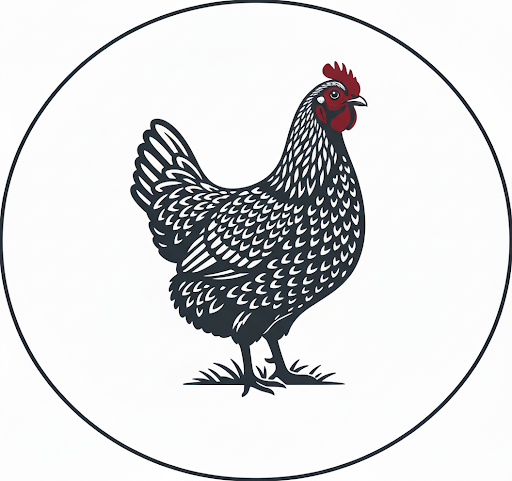The Blue Laced Barnevelder. Feathered jewellery for your garden.
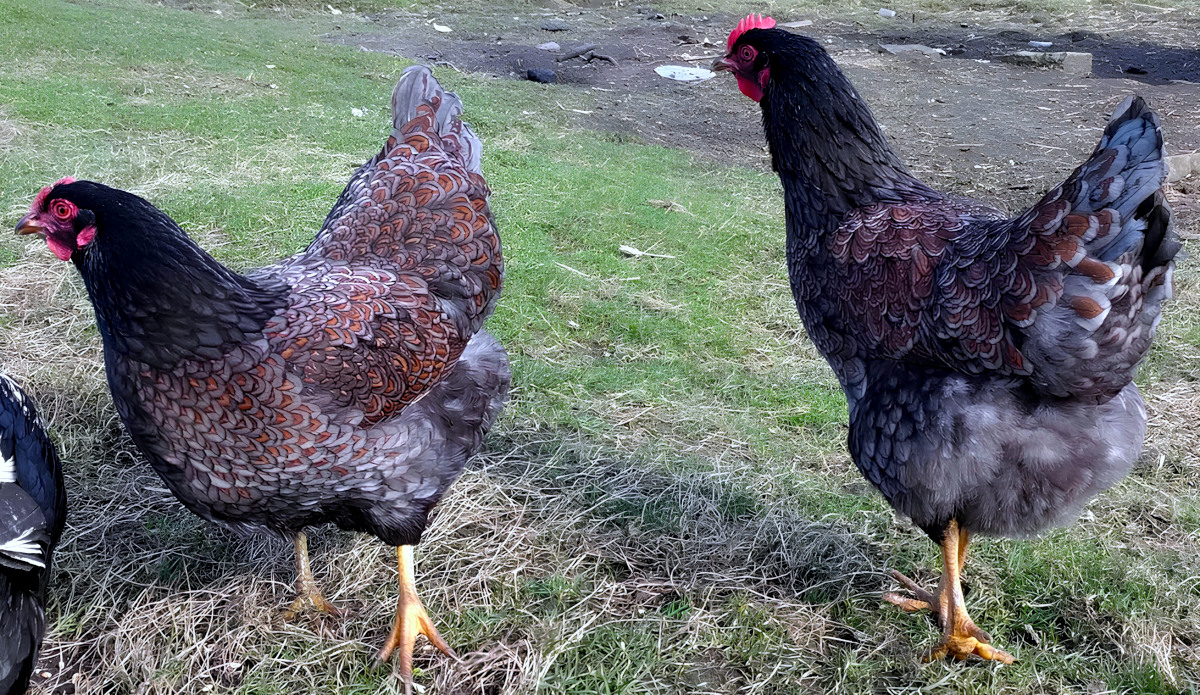
The Blue Laced Barnevelder is a visually stunning and practical breed of chicken, prised for its beautiful plumage, calm temperament, and reliable egg production.
The blue laced Barnevelder is a rare bird and good examples of the breed are rarer still. Unfortunately the Blue laced type almost never lays dark eggs any more. They are available in both large fowl and bantam sizes.
Below: A close up of one of my blue laced Barnevelders foraging in the fields.
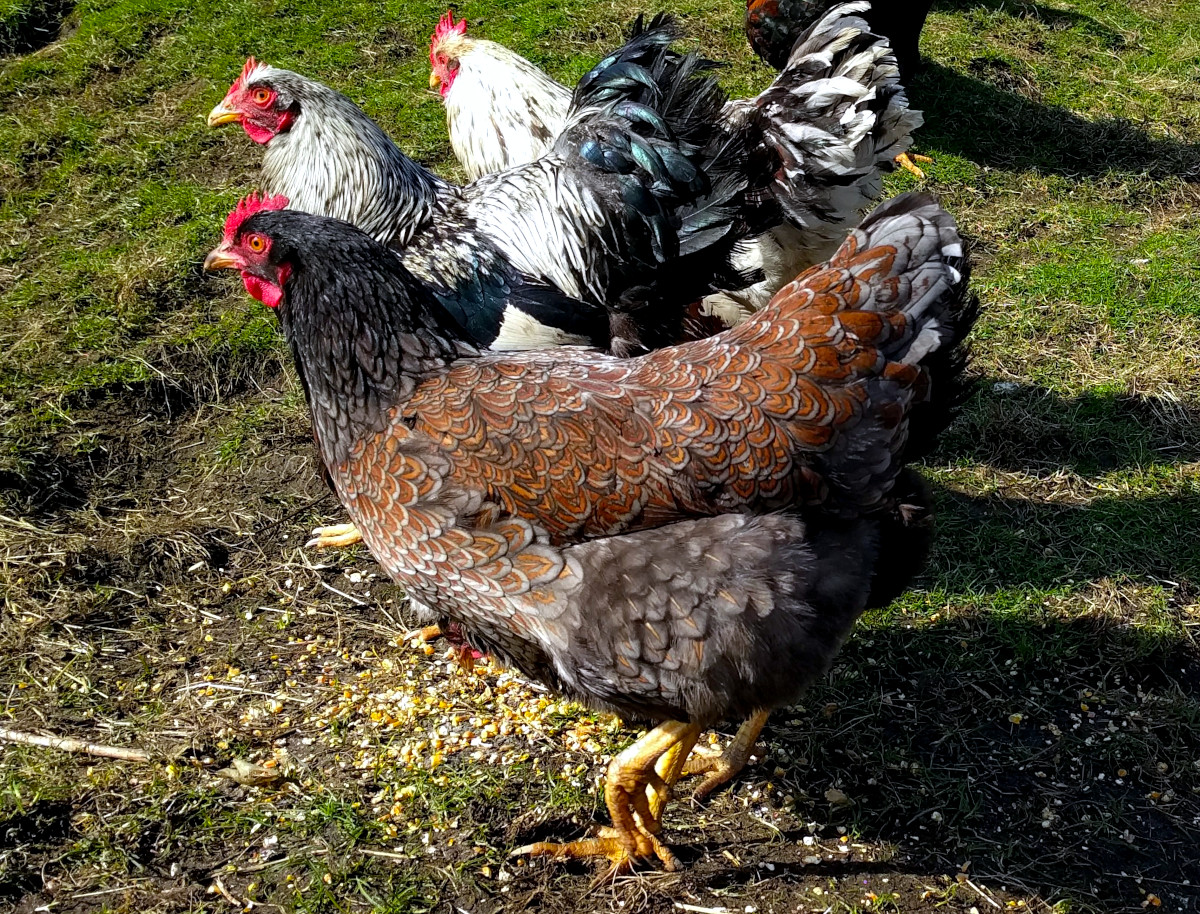
The most distinctive feature of the Blue Laced Barnevelder is its intricate lacing pattern. The hens typically have a rich, reddish-brown base feather colour, with each feather Double laced in a distinct blue-grey lacing.
Below: The breed is calm and rarely aggressive. Here is two of my cockerels and three blue laced hens getting on well.
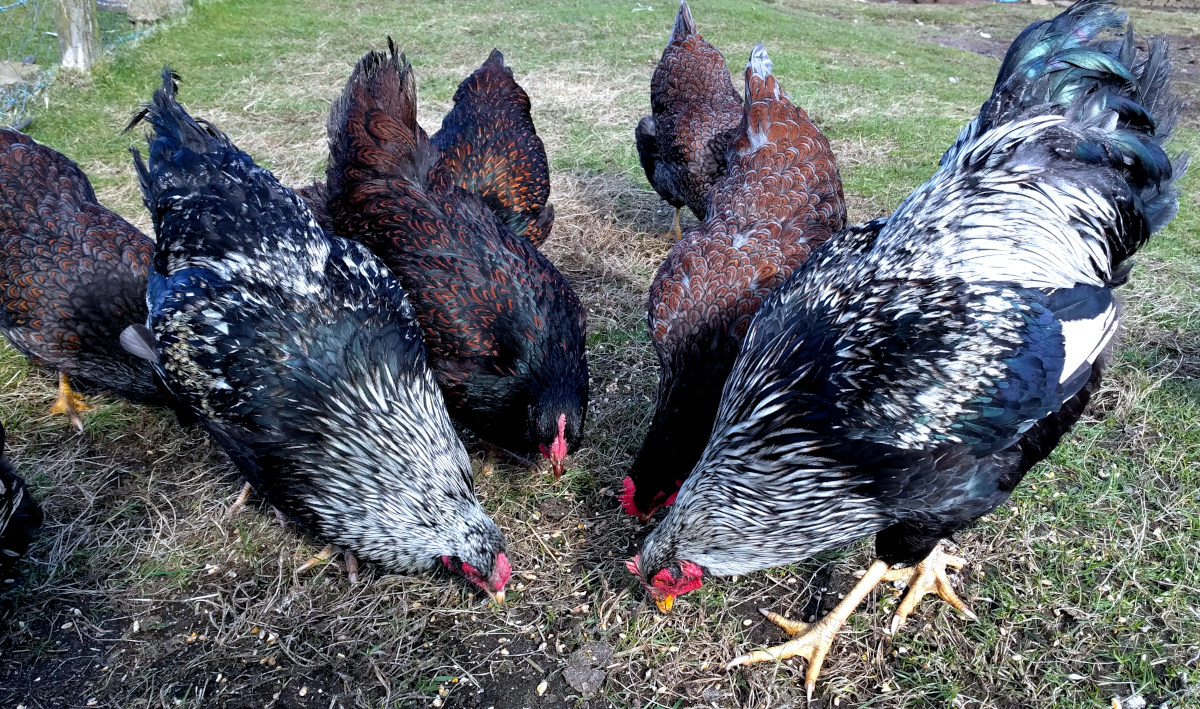
Roosters are single laced and can exhibit (depending on your breed standards) this blue lacing on their breast feathers, while their neck and saddle hackles are often blue with some reddish-brown edging or centres.
Blue Barnevlder breed overview:
- Egg Colour: They are famous for laying dark brown eggs, often described as "chocolate" coloured, although the exact shade can vary. My blue laced eggs are several shades lighter than the standard.
- Productivity: Hens typically lay around 180-200 large eggs per year. They are also noted for continuing to lay reasonably well through the winter months.
- Broodiness: Barnevelder hens can go broody and mine are good mothers.
- Hardiness: Blue Laced Barnevelders are generally robust and hardy birds. They are known to be quite cold-hardy and can also tolerate warmer climates reasonably well.
- Foraging: They are good foragers and enjoy searching for food when allowed to free-range. This can supplement their diet and provide mental stimulation.
- Confinement: While they appreciate free-ranging, they can also adapt to confinement, provided they have adequate space and enrichment.
- Health: Like all chickens, they are susceptible to common poultry parasites and diseases. It is particularly noted that Barnevelders can be susceptible to Marek's disease, so vaccination is often recommended, especially if purchasing from a hatchery or breeder. Standard biosecurity and good flock management practices are essential for maintaining their health.
- Coop Requirements: Standard coop requirements apply: protection from predators and the elements, adequate roosting space (8-10 inches per bird), and nesting boxes (one for every 3-4 hens). A space of around 4 square feet per bird inside the coop is a good guideline.
- Body: They have a compact, well-muscled body, an upright stance, a broad, deep chest, and a slightly curved back.
- Comb, Wattles, and Earlobes: Barnevelders have a single, upright, medium-sized red comb, red wattles, and red earlobes.
- Legs: Their legs are feather-free and yellow.
- Size: Hens typically weigh around 6-7 pounds (2.7-3.2 kg), and roosters weigh 7-8 pounds (3.2-3.6 kg). They stand 14 to 16 inches tall.
- Temperament: Blue Laced Barnevelders are generally known for their calm, docile, and friendly nature. This makes them well-suited for families with children and for mixed-breed flocks where they are not typically aggressive. They are considered intelligent and can become quite tame, often following their keepers around. While roosters of any breed can be protective, My Barnevelder roosters are relatively gentle and placid.
The breed standards for the blue type are exactly the same as for other Barnevelders except the black in the feathers has been replaced with blue.
Below: The Blue Laced Barnevelder is a stunning bird.
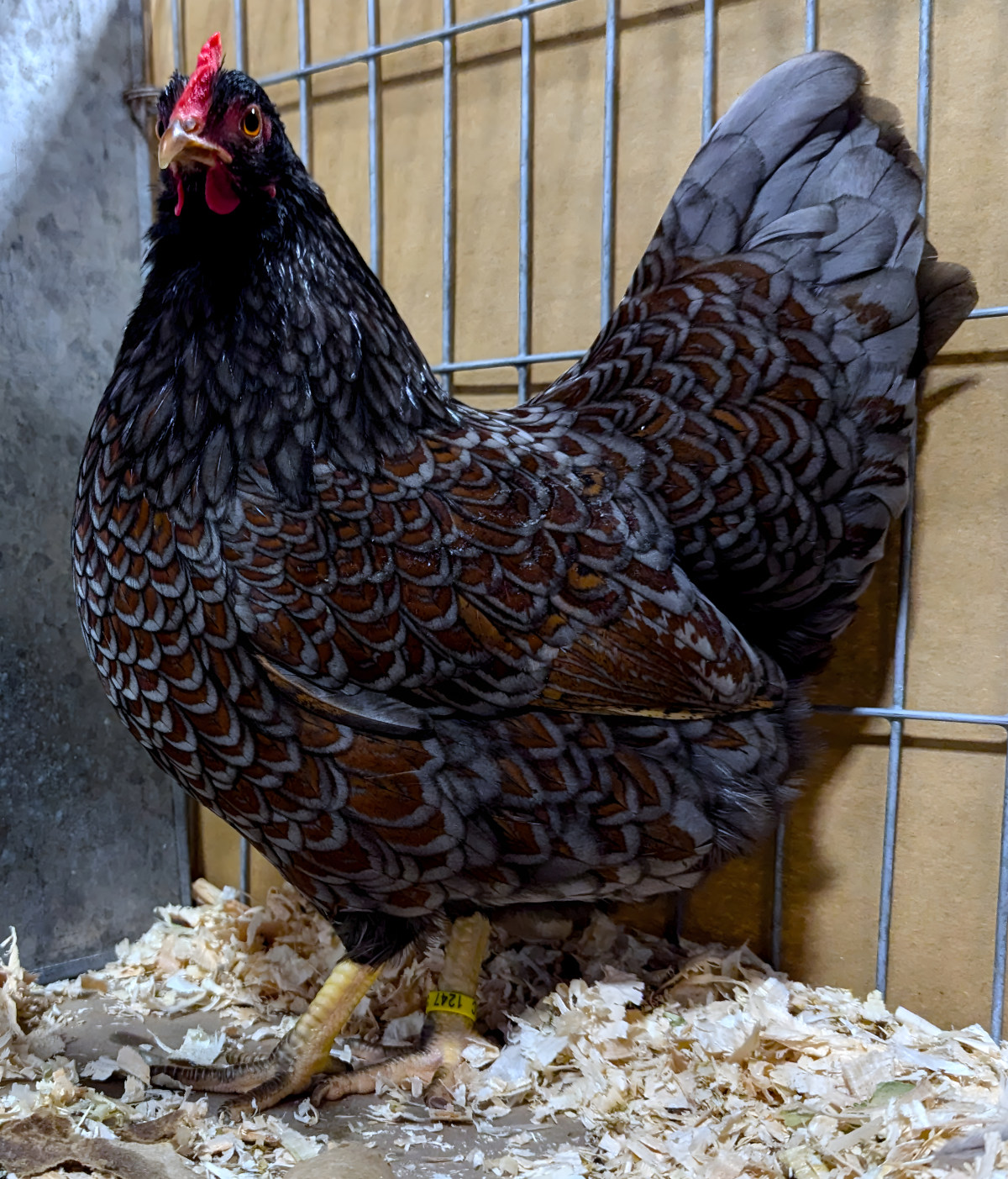
They’re dual-purpose, meaning they provide both eggs and meat, but their stunning plumage makes them a favourite for show and backyard flocks.
They are also available in bantam. The American Poultry Association (APA) doesn’t yet recognise the Blue Laced variety, but its popularity is growing,
Understand the genetics of and breeding the blue Barnevelder:
The blue lacing comes from a dilution gene. Breeding two Blue Laced birds produces 50% blue, 25% black, and 25% splash (white with blue splashes) offspring.
Blue feather colour in chickens follows what's called incomplete dominance. That means if you breed two blue birds together, you won’t get a coop full of blue chicks.
So if you're dreaming of a full flock of matching blue beauties, you’ll need to hatch more chicks than you plan to keep—or choose breeding pairs strategically.
Below: Here is a close up video of a blue laced barnevelder bantam in 4K.
By far the best way to breed the Blue laced Barnevelder is to use a Splash rooster over gold laced hens. You will get 100% blue laced chicks and the lacing in the feathers will be more even.
For some reason I have yet to work out it is better to use the a splash rooster and gold hen rather than the other way round!
For show-quality feathering, look for birds with sharp, even lacing and avoid overly smudged or blotchy patterns. The pattern sharpness often improves in later generations if you’re selecting carefully.
Below: Shafting in the feathers is a common problem for the blues. I demote them to my egg flock if they have faults.
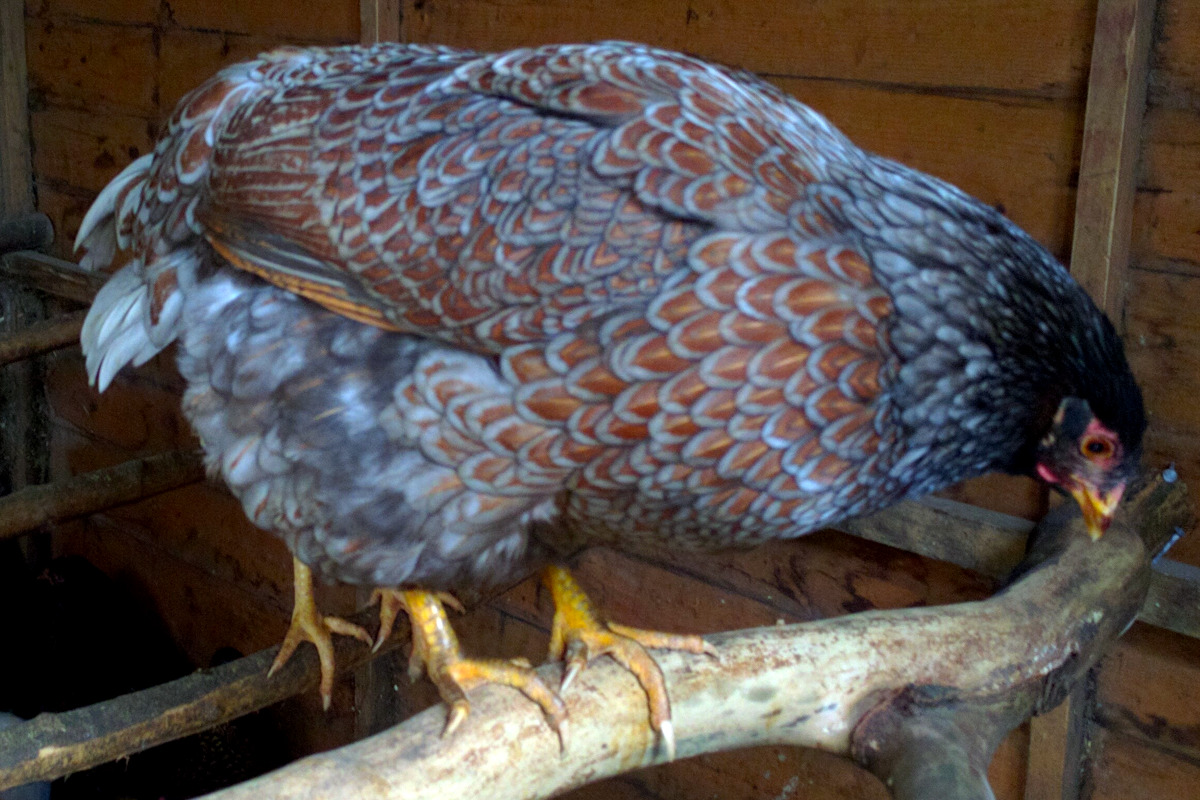
Record everything. I can’t stress this enough. Without notes, it’s all a blur of fluff and feathers come hatching season.
Patience is key. These birds take time to mature, and their lacing improves with age. Don’t judge a chick by its baby feathers. The full glory kicks in around 6–8 months.
Below: A blue laced Barnevelder chick around 5 days old.
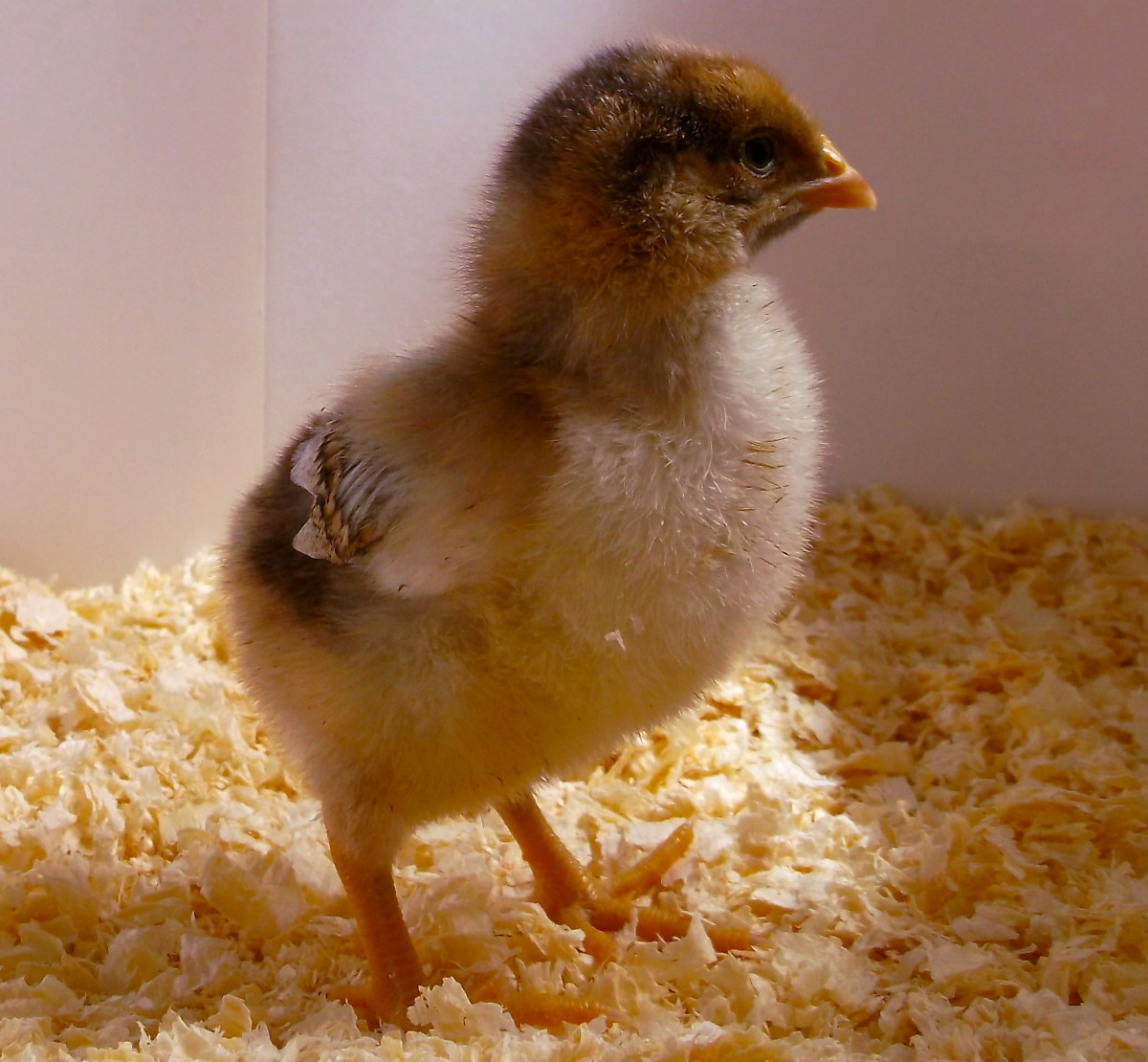
They usually start laying around 6–7 months of age and tend to keep going steadily, even in winter. Mine produce an average of 175 eggs in their first laying season
Below: The eggs for my blue laced Barnevelders are a bit variable in colour and a shade or two lighter than I would like.
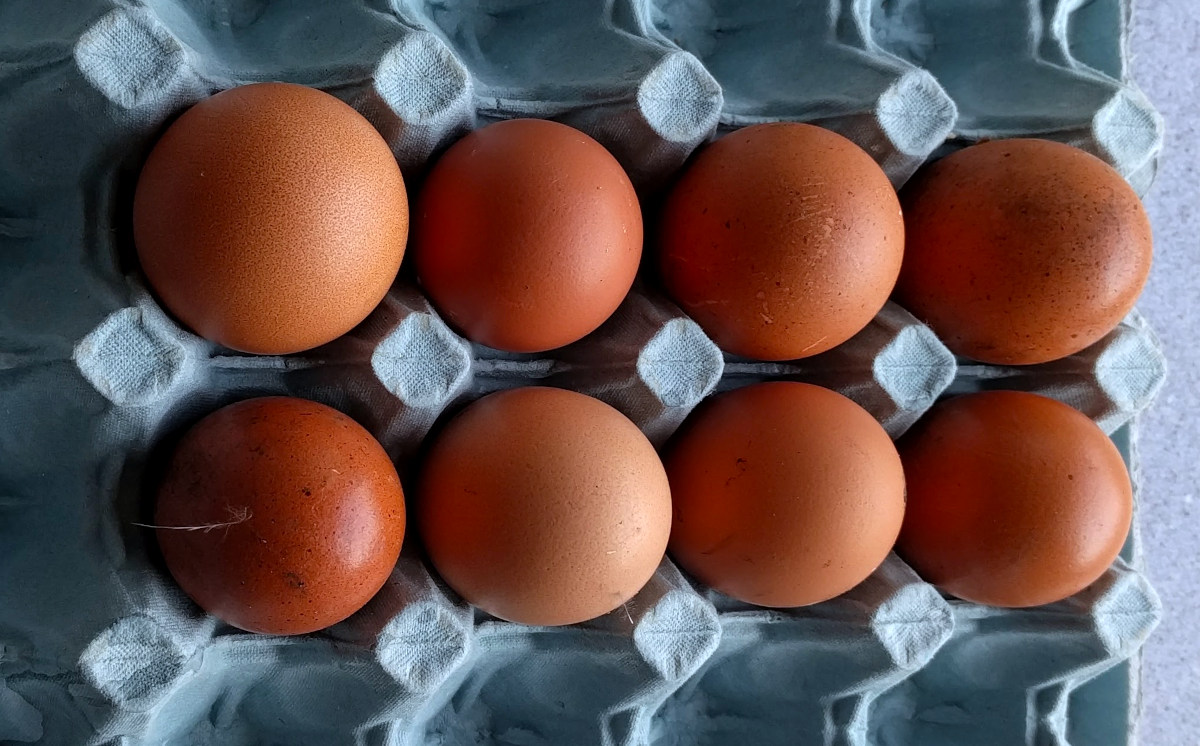
Availability and where to find blue laced Barnevelders:
While the standard Double Laced Barnevelder is more widely available, the Blue Laced variety is sought after by enthusiasts for its unique beauty.
They can be found through specialised breeders and some hatcheries. If you want blue laced to your flock you will likely need to join a Barnevelder club and find a specialist breeder.
To buy Blue laced Barnevelders expect to pay:
- Up to £4 ($5) for hatching eggs,
- Up to £8 ($10) for day old chicks,
- Up to £20 ($25) for growers,
- Up to £80 ($100) for full grown birds.
I bought my first trio at auction and at that time they were the most expensive chickens I had ever bought. I paid £220 for a splash cockerel and 2 laced hens.
Blue Laced hatching eggs can sometimes be bought online through specialist websites and traders.
